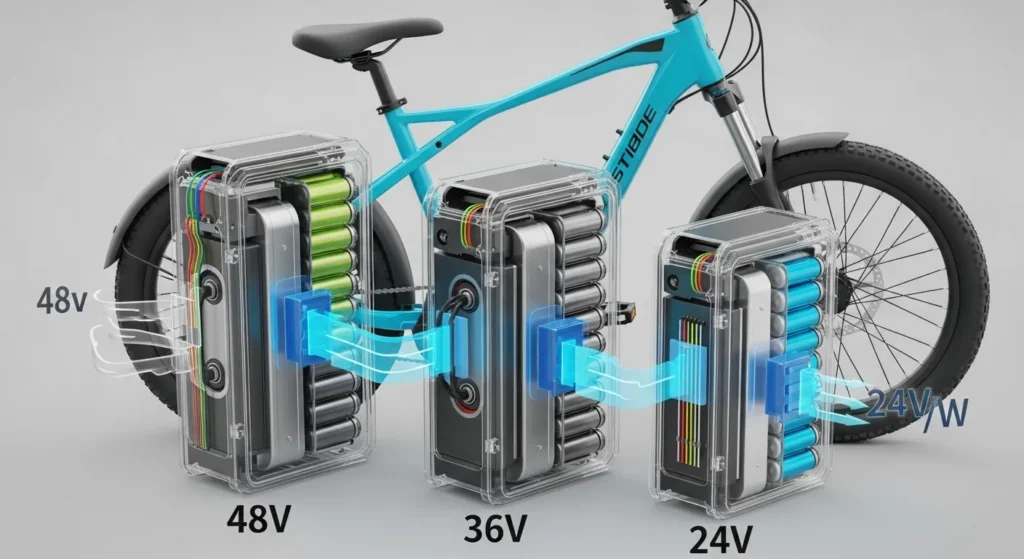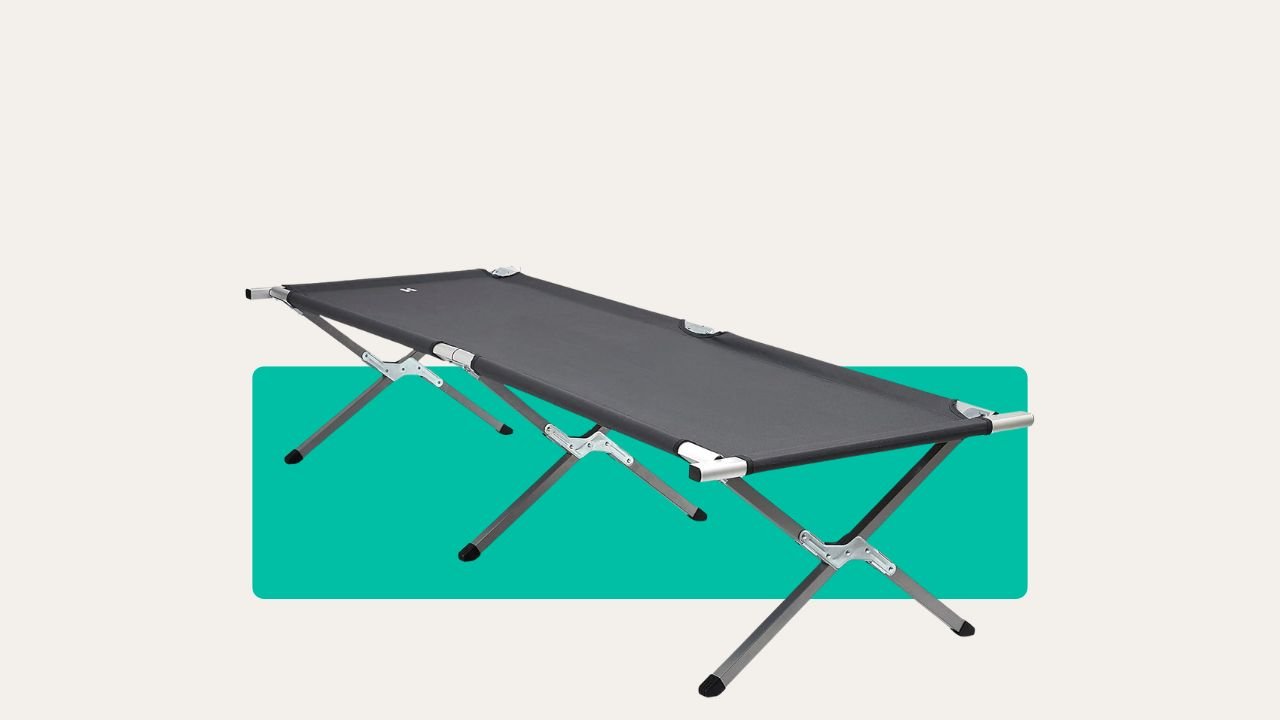Most people think the biggest e-bike battery always wins, but it’s not that simple. I’ve watched more than one mate get stranded halfway up a muddy Lake District bridleway, cursing their “upgrade”.
It’s like bringing a king size sleeping bag for a Dartmoor wild camp—big isn’t always best. Let’s sort out what voltage actually means for your rides, with zero nonsense and plenty of “voice of experience”.
Why Battery Voltage Matters on an E-Bike?
Battery voltage isn’t just numbers. It sets the tone for your entire electric biking experience—speed, punch, and even how far you’ll get before the low-battery panic sets in.
Think of voltage like water pressure in a hose: more volts, more oomph. But just as too much pressure can burst a hose, mismatch your battery and motor and you’re in for a world of trouble.
Key Points Affected by E-Bike Battery Voltage
When you’re weighing up battery options, look at four things:
- Power: Higher voltage gives your motor more push, which means better acceleration and climbing.
- Range: Watt-hours matter most for range, but high-voltage packs can help bigger motors go the distance.
- Compatibility: Your controller and motor must match the battery voltage. Ignore this, and you risk blowing your electrics—or facing limp performance (been there, done that).
- Cost: More voltage usually means more cash up front. Sometimes more weight, too.
If you’re thinking price is all that matters, take it from me: saving a few quid can land you pushing your e-bike home in sideways rain.
24V, 36V, and 48V E-Bike Batteries Side by Side
Here’s how the three main battery types stack up for real-world riders:
| Feature | 24V Battery | 36V Battery | 48V Battery |
|---|---|---|---|
| Typical Use | Old/entry-level bikes | Commuters, most city bikes | High-powered, off-road/cargo |
| Max Power Output | Low | Moderate | High |
| Typical Range | Short | Moderate | Long (if capacity matches) |
| Cost | Low | Medium | High |
| Speed Potential | Low | Up to 20 mph | 20+ mph (28ish, UK pedalec) |
| Compatibility | Rare on new bikes | Very common | Becoming standard |
Who Should Go for a 24V Battery?
Honestly, not many folks anymore. 24V batteries are for very simple, lightweight bikes—think kids’ e-bikes, or if you’ve restored an old folder from the shed.
They’re cheap, yes, and fine if your route is flatter than the Fens. But catch one hill with three bags of shopping and you’ll wish for more grunt.

I once retrofitted a 24V kit onto a mate’s battered step-through. Worked a dream along the canal, but on the steep haul up to camp in the Peak District, it wheezed like a knackered airbed.
If you just need an e-bike for short hops to the corner shop or your knees demand gentle pedal assist, 24V does the job. But for most UK rides, it’s yesterday’s news.
When a 36V Battery Makes Sense
Here’s the real Goldilocks: 36V batteries sit slap bang in the middle. They power most commuter bikes and hybrids you see zipping around cities and villages.
Expect sensible speeds (about 15-20mph), affordable prices, and good range. If your e-bike has a 250-500W motor, this is likely what’s already fitted.

A 36V is much like bringing a three-season tent to Wales: covers almost everything, won’t break your back—or your bank. They’re great for regular riders, people crossing towns, or taking on gentle countryside hills. Unless you’re carting a lot of weight or hunting for speed, you won’t need more.
If you ride in all conditions, like I do—wet roads, sharp hills by the coast, dodging the Yorkshire wind—a 36V battery delivers solid, dependable power every time. No drama, just a bit of smugness when you overtake a sweating pal at the lights.
Why Pick a 48V E-Bike Battery?
Now we’re talking power. 48V batteries are the muscle for mountain bikers, adventure seekers, cargo haulers, or anyone who wants extra “go”. They’re faster (well over 20mph, UK legal stuff aside), climb like mountain goats, and let you tow a loaded trailer, kids and all.

Riding in the Scottish Borders last year with a fully-loaded 48V fat bike, I powered up muddy forestry tracks where even sheep were giving up. On hills that would’ve stalled a 36V kit, the 48V just kept pulling—and got me back to camp before dark (and the midges).
The cost? More cash, bigger size, and more weight in your rucksack or rack. Plus, unless your motor and controller are built for it, 48V isn’t an option. But if you crave top performance, ride hilly ground, or always want just a bit more—this is your battery.
How Voltage Affects Speed and Hill Climbing
Voltage is your secret ingredient for speed. Higher voltage means your motor spins faster, but only if the controller and limits let it. With the right setup, a 36V battery tops out around 20mph—enough for most commutes. Jump to 48V, and you’re looking at 25 mph and up, making short work of open stretches or windswept coast roads.
It’s on the hills where you feel the difference most. I remember crawling up the back lanes near Matlock with my old 36V setup, only to get smoked by a mate on a 48V bike. He sailed past, grinning into the drizzle, while I contemplated switching to walking boots.
If you ride loaded, if you need to tackle the sharpest climbs, or if headwinds are your nemesis, extra voltage is a lifesaver. Always match speed, power, and your bike’s limits—crash and burn isn’t just a turn of phrase when electrics fail mid-ride.
Keeping Your E-Bike System Compatible and Safe
This is where camping lessons pay off—always check your gear fits before you leave home. Battery voltage must match your motor and controller numbers, or you’ll risk expensive mistakes.
Plug a 48V battery into a 36V-only system, and you could fry fuses, blow up controllers, or set off some very worrying smells (ask me how I know…).
If you’re upgrading, check:
- Motor and controller voltage rating
- Charger compatibility (use the right e-bike charger 36v, or 48v—never swap)
- Cable ratings and fuse sizes
Just because a bigger battery “fits”, doesn’t mean it’s safe. Upgrading can make sense, but always read the specs—and ask the brand, not the bloke down the pub.
What to Think About Before Deciding
You wouldn’t pick a sleeping bag for Everest when you’re camping in Kent. So ask yourself:
- Where do you ride most? Flat city streets or hilly Dales?
- How far are your typical journeys?
- What’s your budget?
- Is your e-bike compatible with higher voltages?
- Will you be carrying big loads, or just yourself and a rain jacket?
For most, 36V hits the sweet spot. If you’re serious about hills, cargo, or long days exploring coast paths, push for a 48V system—but check your e-bike can take it.
Which Battery Voltage is Best for You?
Here’s the no-nonsense version:
- 24V Battery: Stick here only for older bikes, simple kids’ e-bikes, or super-short, flat commutes. Expect less power and shorter range.
- 36V Battery: This is the “good for nearly everything” option. Great for UK hills, town riding, and you’ll find replacements everywhere. Don’t overcomplicate it.
- 48V Battery: For big loads, proper speed, serious climbs, or anyone who wants to future-proof their setup. Only if your bike is up to it, and your wallet agrees.
I’ve swapped batteries on rainy campsites and battled with wiring by headtorch. The best ride? The one where your kit matches your journeys. Don’t get snared by thinking biggest is always best—match your battery to your adventure, and you’ll spend less time pushing and more time enjoying the path ahead.
Whether you’re prepping for a coastal trek, battling through urban drizzle, or just want reliable juice for the school run, pick the right battery for your kind of ride.
Got more technical or want to see some real bike options? Check out current electric bike batteries 48v or e-bike charger 36v choices and always do your “gear check” before you roll out.
And if you’re ever stuck by the side of the M6 with a dead battery, just remember—someone’s probably cooked beans on a weaker stove than you. Pick the right gear, and the hills ahead look a lot smaller.









